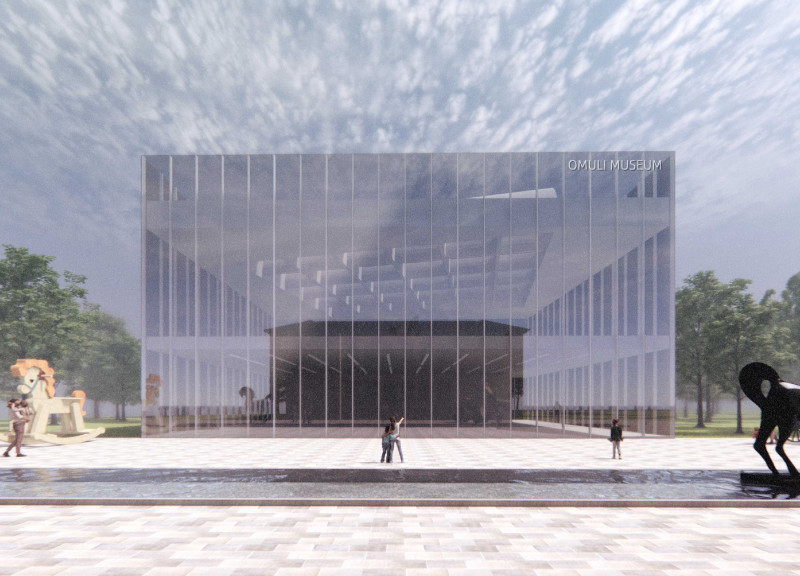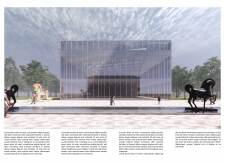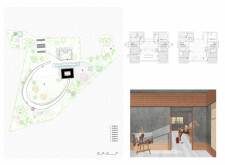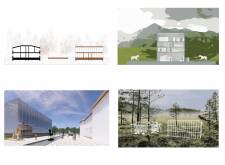5 key facts about this project
The museum's primary function is to display art while encouraging visitor interaction. It features open galleries that can adapt to various exhibition types, from temporary art installations to permanent collections. This flexibility is essential for accommodating different artistic mediums and community events, thereby enhancing the museum's role as a gathering space.
Design Innovation in Transparency and Nature Integration
One of the unique aspects of the Omuli Museum is its extensive use of glass, which facilitates an unobstructed view of both the interior exhibits and the exterior landscape. This design choice not only enhances the aesthetic value of the museum but also promotes energy efficiency through natural lighting. The structural framework utilizes steel elements, providing both strength and modernity while ensuring a lightweight appearance.
The integration of nature is a critical component of the design. The landscaping plan includes native plant species and outdoor sculptures that harmonize with the museum’s architecture. Curvilinear pathways guide visitors through the grounds, encouraging exploration and interaction with both art and nature. This approach positions the museum as part of the landscape instead of a separate entity, which enhances its cultural significance within the local community.
Spatial Organization and Visitor Experience
The interior layout is designed with an open floor plan that fosters fluid movement among exhibits. Spaces designated for workshops and artist residencies reflect a commitment to community engagement and educational outreach. The museum incorporates amenities, such as a café and retail spaces, strategically placed to enhance the overall visitor experience while ensuring comfort and accessibility.
Significantly, the architectural design allows for varied ceiling heights and spatial configurations, providing a diverse environment for different forms of artistic expression. This adaptability helps position the museum as not only a place of exhibition but also a venue for creativity, learning, and social interaction.
To gain deeper insights into the Omuli Museum, it is beneficial to explore architectural plans, sections, and designs that detail its functional and aesthetic intentions. Review these elements to appreciate the comprehensive design strategies employed and their impact on the museum's role in fostering community and culture.


























